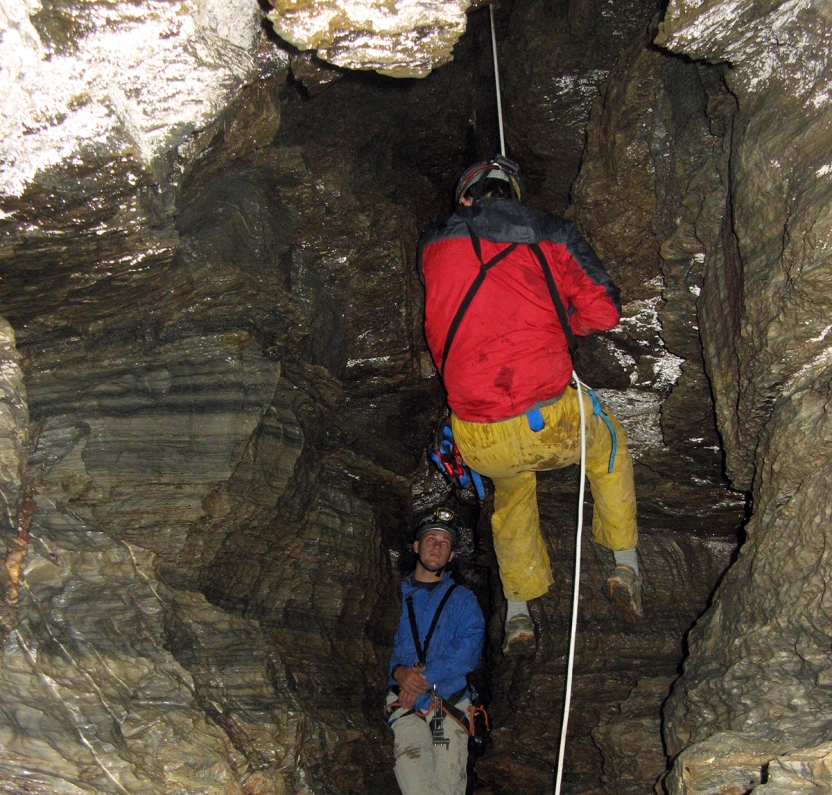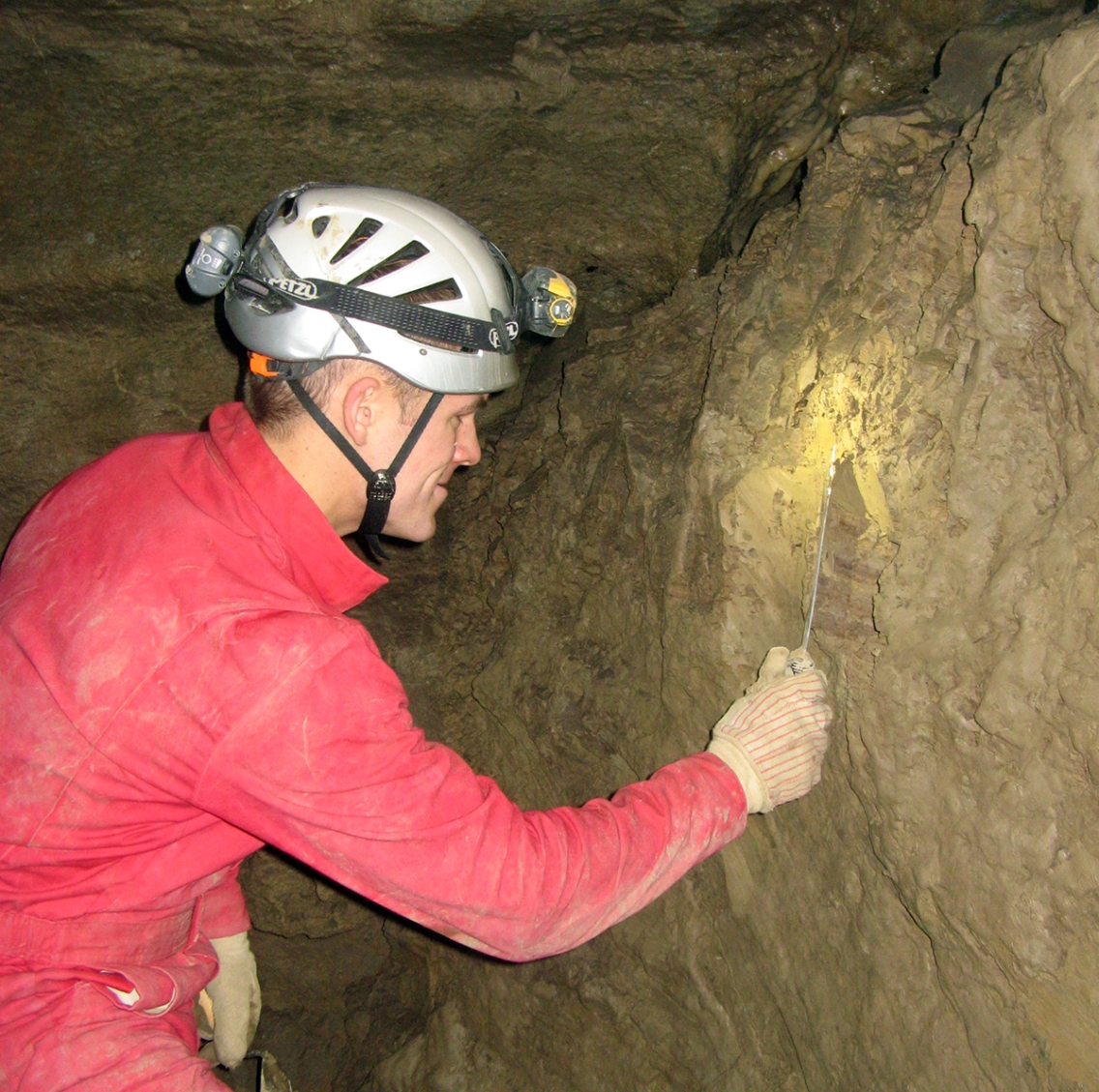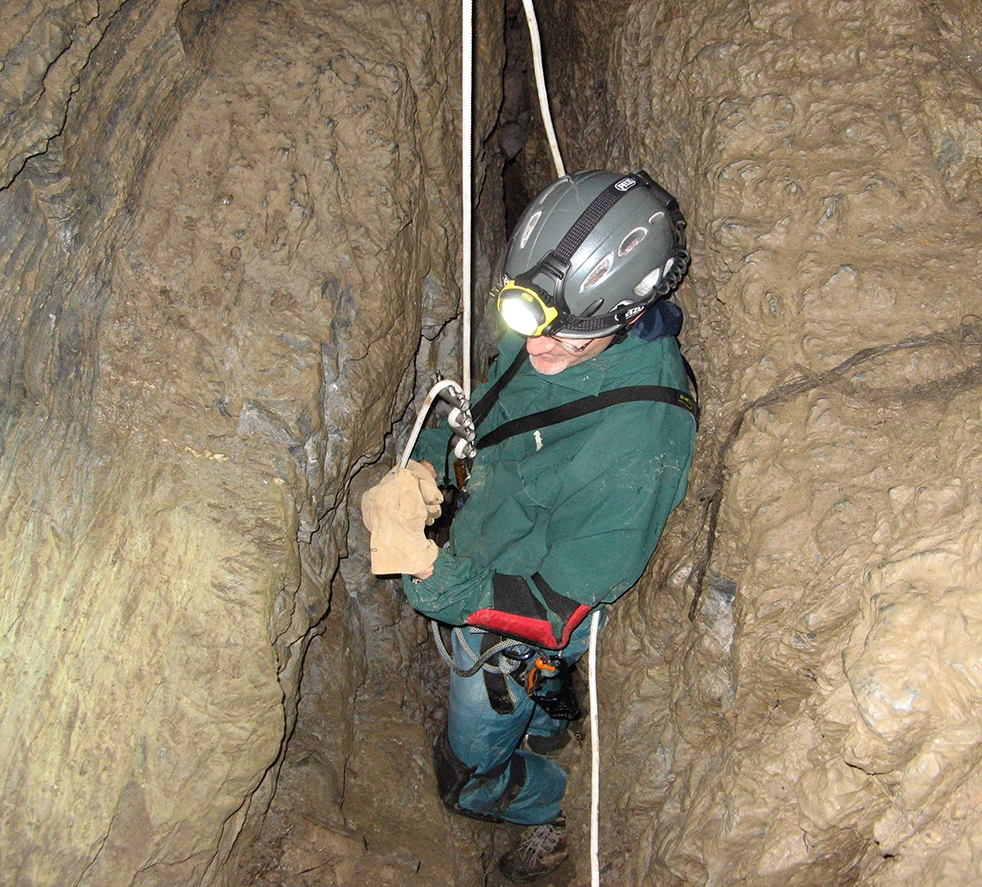Faculty Research on Weybridge Cave Offers Insight to Glacier Movement

MIDDLEBURY, Vt. – Professor of Geology Jeff Munroe, Assistant Professor of Geology Will Amidon, and research assistant Zachary Perzan ’14.5 recently published an article in the Journal of Quaternary Science related to research in the Weybridge Cave, just a few miles away from campus. Their findings offer numerical constraints on the pace of ice sheet advance leading up to the last glaciation.
During the course of their research, the three-member team navigated the narrow twists and turns of the nearby cave, rappelling down 30-foot stretches to eventually end up 100 feet below the surface. They initially explored most of the cave’s accessible areas, which extend for hundreds of feet in two directions with some side branches. Their focus was on sediments that had washed into the cave over thousands of years, which were much geologically younger than the cave itself, and what those deposits could reveal about the rate at which the ice sheet advanced through western New England during the last Ice Age.
The research team used a newly equipped luminescence-dating lab at Bicentennial Hall to determine the age of sediment samples collected from the cave.
“The technique is nicely suited for cave studies because it determines how long ago sediment was last exposed to sunlight,” said Munroe. “If you imagine sediment at the surface being washed into the cave during a summer thunderstorm, this dating method would determine how long ago the sediment entered the complete darkness.”

When the team came across an area they wanted to sample, they turned off their lights before digging into the sediment. For a short time, they had to work in total darkness to preserve the sediment’s luminescence properties. They put the collected samples in sealed containers, opening them only under special light conditions (similar to a photographic darkroom) back at the lab to begin their analysis.
The three researchers were intrigued to discover that sediments from the cave were older than the last glaciation–deposited between 68,000 and 35,000 years ago.
“This is surprising because here, in northeastern North America where glaciers covered everything, very little sediment remains from the landscape that predated the glaciation,” said Munroe. “Glaciers are so erosive that anything loose and unconsolidated on the landscape was scraped away and deposited far to the south. In light of this, sediments in Weybridge Cave with their clear preglacial ages are really unusual in this part of the world.”

Professor of Geology Jeff Munroe navigates a tight space in the Weybridge Cave during a research trip.
Munroe said that establishing the age of the youngest sediments they found, which were 35,000 years old, enabled them to calculate that ice was advancing across western New England at a rate of about 100-200 feet per year at the time.
“This is the first time anyone has been able to put reasonably tight numerical constraints on how rapidly the ice advanced during the run-up to the peak of the last glaciation,” said Munroe. “It has has important implications for our understanding of how the climate system shifts between the modes of interglacial to glacial.”
The article, “Cave sediments constrain the latest Pleistocene advance of the Laurentide Ice Sheet in the Champlain Valley, Vermont, USA,” appeared in the November 2016 issue of the journal.

